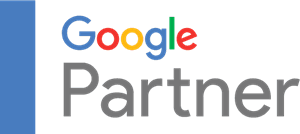This website uses cookies so that we can provide you with the best user experience possible. Cookie information is stored in your browser and performs functions such as recognising you when you return to our website and helping our team to understand which sections of the website you find most interesting and useful.
25 Mar

Google’s mission is to organize the world’s information and make it universally accessible and useful. In order to meet this goal, it is continually evolving its algorithms to enhance user experience. Gone are the days of traditional SEO when redundant keyword stuffing and unnecessary use of backlinks would help in rankings. Google now analyses click through rates, bounce rates and time spent on site. When a user finds something relevant, (s)he spends more time on the site. This helps search engines understand that the page results match user intent. Therefore the primary goal of today’s SEO should be creating pages to serve the user intent in the best possible manner. In this article we look at how to create content to best serve the user intent.
How to identify the user intent
Now that you know what the user intent is, let us elaborate on how to identify it. Intent of queries made by users on search engines can be classified into three buckets:
- “Do” or Transactional: These include queries where the intent of the user is to perform an action or a transaction on the internet. Typical search terms would include “I want to buy a concert ticket” or “I want to watch a video.”
- “Know” or Informational: These include queries where the user intent is to find out about something on the internet. Typical search terms would include “Who won the best actor Oscar this year” or “Where is the best ice cream shop in Mumbai.”
- “Go” or Navigational: These include queries where the user intent is to land on a particular page on the internet. Typical search terms would include “Facebook login” or “Wimbledon home page.”
In order to identify what the user’s intent is, it is a good idea to know what bucket the query falls into. However, in some cases one may not be sure what the intent of the user might be. For example when a user searches for “green tea” it may imply that the user either wants to know about the properties and benefits of green tea (“Know”) or wants to buy it (“Do”). To understand the intent of the majority of users, you should search the query in Google. The SERP for “green tea” looks like this:

Thus, implying that this is a “Know” query and the intent of users is to find out about the properties and benefits of green tea.
A user whose intent is to buy green tea would put in a more specific “Do” query such as “buy green tea online.” Here you see the SERP has only results from pages selling green tea, thus matching the user intent.

You see how search results on Google are tailored to user intent. Google gives results by judging the intent of the user based on the kind of queries that are entered and the engagement of the users with the pages that are displayed.
It is important to understand user intent in order to optimise your content in accordance with your business goals. We observed this in case of one of our clients in the e-commerce gifting space who was not ranking well for their flower gifting page.
We analysed that the intent of a user when (s)he searches for “flowers” is a “Know” query whereas a search for “flower delivery” is a “Do” query. So in order to cater to the goals of the business which was to sell flowers, we recommended to them to change the primary keyword from “Flowers” to “Flower delivery.” This helped improve traffic as now the page content and user intent were in sync.
Creating content with high user intent
In order to understand how to create content which satisfies the user intent, let’s take the example of an amusement park in Mumbai – “Essel World”. A quick keyword research in tools like Google Keyword Planner, Ahrefs, Moz, etc. will show you related searches around this topic.

You can see that users want to know about queries like “Essel World offers”, “Essel World entry fees”, and “Essel World timings.” In order to create a high ranking page for a post on Essel World it would be a good idea to use these keywords in your content or create content around these. This will address the user intent effectively and draw relevant traffic to your webpage.
Skipping the irrelevant keywords
Now you know what user intent is and how important keyword research is in bringing the right traffic to your page. However, it might often happen that the keyword suggestions that come up in the Keyword planner may or may not be relevant to the business goals. Thus, it is important to exercise some caution while shortlisting the long tail keywords. This can be better understood with the help of this example.
A leading online seller of fish approached us to get more traffic to the website comprising of users whose intent was to buy fish, limited to the products they were selling.
We started by putting in targeted search queries such as “buy basa fish online.”And the keyword planner gave us search volumes for this and other related search terms.


The results included keywords like “basa fish recipes”, “buy fish online”, “online fish store” etc and they have good search volumes. While “buy fish online” and “online fish store” match user intent with business goals, “basa fish recipes” doesn’t. People searching for “basa fish recipes” are looking for recipes specifically and not to buy fish. Hence, even if the page does manage to rank, it’ll encounter a high bounce rate, and eventually rankings will drop. One hack to check user intent in case of confusion is to manually search on Google to check the top 10 pages for the important keywords.
Thus, you have to ensure synergy between your business goals and user intent and choose keywords accordingly.
Factoring for multiple pages with similar intent
There is a great deal of subjectivity involved in understanding what really the intent of the user is. Sometimes, creating two pages might be better than having one page. However, if the content on both pages is similar, it may lead to internal duplicate content which may affect rankings. There is no black or white answer to this but you can understand it better with the help of this example.
We were creating content on Organicfacts regarding coconut oil. The question was whether there was a need to create two pages, one on “Properties of coconut oil” and the other on “Benefits of coconut oil.” This could be answered by delving into user intent. We realised that when the user wants to get acquainted with the constituents of coconut oil, s(he) searches for “Properties of Coconut Oil”. However, when a person searches for “Benefits of Coconut Oil” (s)he is specifically looking for associated benefits or use cases of coconut oil.
Since, the intent here is majorly different, there was a need to create two separate posts to be able to address each of the intents effectively. This helped bring targeted traffic to both the pages, and both pages starting ranking high on SERP for the respective queries.
This is often useful when you are writing new content and want it to match user intent.
Conclusion
Google is continually evolving its algorithms and while it may be difficult to keep track of all updates, they all have a common goal- enhancing user experience. So, whether you are a new business or an existing one, always create content keeping in mind the intent of the end user. This will enhance user experience and help optimise your rankings.













